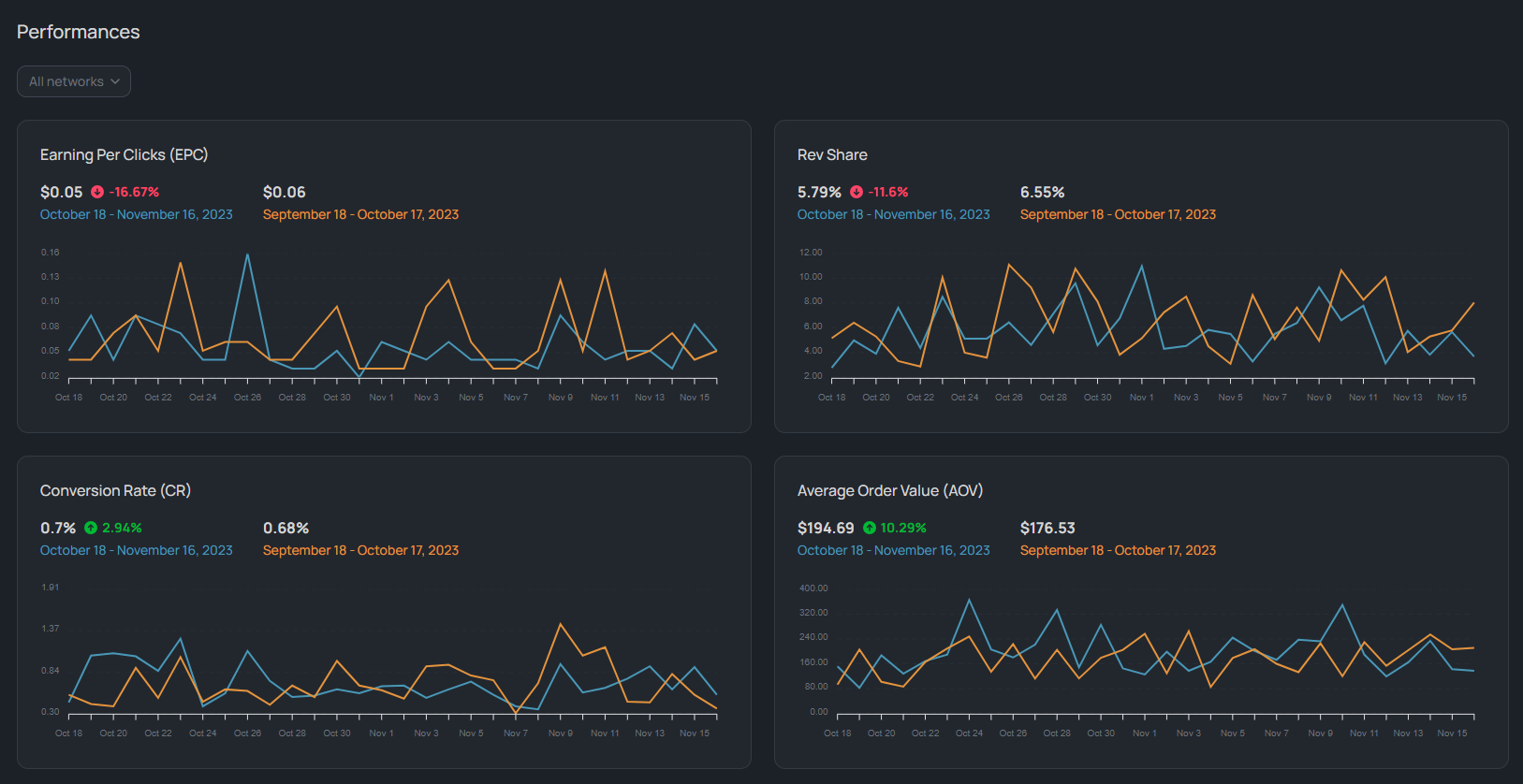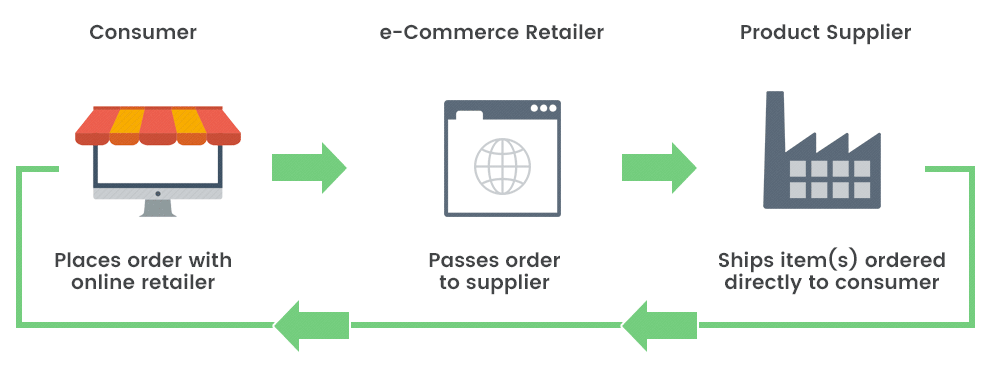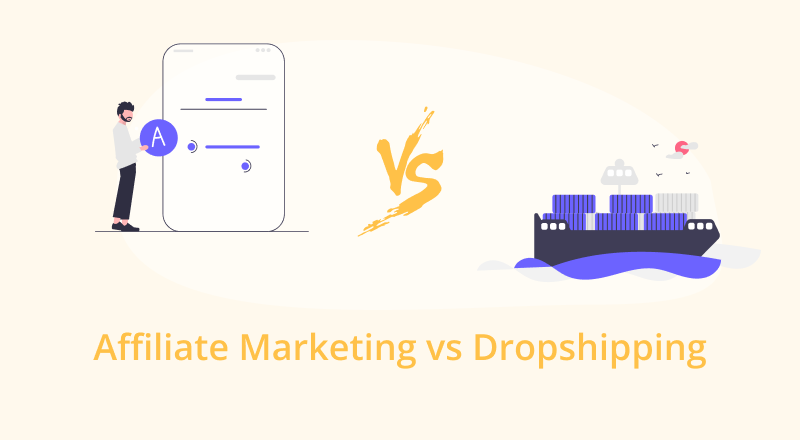Table of contents
People are always on the lookout for ways to make money online. From creating viral content to ecommerce, there are a comprehensive number of ways to earn. Two methods are beginning to stand out: affiliate marketing and dropshipping.
The two approaches offer different ways of doing online business, each with pros, cons, and unique features. Whether you're a seasoned online entrepreneur or just starting in ecommerce, knowing these strategies is essential to succeed in the online marketing world.
In this Strackr guide, we'll break down affiliate marketing and dropshipping, highlighting the key differences between them.
Let’s get started!
Affiliate Marketing vs Dropshipping: Overview
If you're looking to make money online without dealing with product hassles, then dropshipping and affiliate marketing are for you. Both are practical ways to enter ecommerce without managing physical products.
Affiliate marketing lets people earn by promoting products to their audience, getting a percentage for each sale. It's a low-cost way for online monetization without dealing with product ownership or order fulfillment complexities.
On the other hand, dropshipping allows entrepreneurs to team up with suppliers who manage storage, packaging, and shipping. When a customer orders, the product is shipped directly from the supplier to them, which reduces the upfront costs and inventory risks. Essentially, dropshipping is appealing for those entering ecommerce because there isn’t the burden of stock management hassles.

Strackr's impact extends beyond affiliate marketing, proving to be a valuable ally for dropshippers too. The detailed transaction reports we offer delve into crucial insights such as user device, operating system, referrer clicks, landing pages, and the time from click to order confirmation.
What is Affiliate Marketing?
Affiliate marketing is a performance-based online marketing strategy where individuals, known as affiliates, earn commissions by promoting products or services and driving traffic or sales through unique referral links provided by merchants.
For instance, consider a fashion blogger with an affiliate partnership with an online clothing store. The blogger promotes the store's products on their blog or social media platforms using unique tracking links. When their audience clicks on these links and makes a purchase, the blogger earns a commission.
The beauty of affiliate marketing lies in its mutually beneficial nature, where affiliates earn income, and merchants gain increased sales through third-party promotion.
How Affiliate Marketing Works
- As an affiliate publisher, your initial step involves strategically placing an affiliate link to promote a specific product.
- When a consumer engages with your content and clicks on the affiliate link (with or without a Subid parameter), they are redirected to the merchant's site.
- The magic happens when the consumer completes the purchase. As an affiliate publisher, you earn a commission for each successful conversion stemming from your promotional efforts.
Examples of Affiliate Marketing
In the following examples of affiliate marketing, we'll explore real-life scenarios where individuals harness the power of affiliate marketing. Check them out below:
1. The Barbecue Lab

The Barbecue Lab serves as a compelling example of affiliate marketing, employing a traditional yet highly effective approach.

Specializing in the review and promotion of home barbecue grills and cooking accessories, what sets it apart is its ingenious fusion of YouTube videos and search engine optimization (SEO). With an impressive ranking for over 18,000 keywords on Google, it goes beyond conventional strategies.
2. Wirecutter

Meet Wirecutter, a colossal affiliate marketing powerhouse that made headlines with its $30 million acquisition in 2016 and a staggering $20 million in revenue by 2018.
Renowned for its extensive product reviews, Wirecutter dominates the digital landscape, ranking for nearly 5 million keywords and attracting over 16 million monthly visits, courtesy of Google alone.
Wirecutter simplifies the decision-making process for consumers by curating lists of the best gear and gadgets. Since its inception in 2011, this affiliate giant has flourished under the New York Times umbrella, strategically employing affiliate links to leading platforms like Amazon, Home Depot, Nordstrom, and Office Depot.
Pros & Cons of Affiliate Marketing
Pros:
- Passive income potential
- No cost to start
- Accessible to almost anyone
- No need to create products or manage inventory
- Diverse product range to choose from
Cons:
- Dependent on merchant programs
- Limited control over products and pricing
- Income can be unpredictable
- Some products may have low commission percentages
What is Dropshipping?
Dropshipping is an ecommerce business model where entrepreneurs sell products to customers without holding any inventory. In this model, when a customer makes a purchase, the product is directly shipped from the supplier to the customer. It eliminates the need for the seller to handle the products physically, manage inventory, or engage in the complexities of order fulfillment.

Imagine you decide to start an online store selling handmade jewelry using the dropshipping model. You collaborate with a jewelry supplier who manages the creation, storage, and shipping of the products. When a customer places an order on your website, the supplier is notified, and they handle the packaging and shipping directly to the customer.
As the entrepreneur, your role is focused on marketing, customer service, and managing the online storefront, without the burdens of inventory management or shipping logistics.
How Does Dropshipping Work?
- As a dropshipper, you establish a retail price for a product. For instance, if the product's actual value is $20, you may decide to sell it for $30.
- When a consumer places an order through your platform, they pay the retail price you set, in this example, $30.
- You then forward the order to the vendor, purchasing the product at a wholesale cost, let's say $20.
- The vendor, in turn, ships the product directly to the consumer.
- You retain the margin between the retail and wholesale prices, earning a commission of $10 on the sale.
Examples of Dropshipping
Here’s how dropshipping works in the real world:
1. Articture

Customers flock to Articture for its unique blend of artistic aesthetics, Aliexpress affiliate marketing, and functional excellence in the realm of furniture and home decor items.
A key strategy employed by Articture is the ability to brand and theme their store effectively. This branding prowess enables them to command higher prices for their products, creating an aura of exclusivity. With 395 products in their catalog, each boasting an average price of $191, Articture not only showcases the potential of dropshipping but also serves as an inspiring source of ideas for entrepreneurs seeking to establish their own niche dropshipping stores.
2. Notebook Therapy

Notebook Therapy emerges as a prime example of dropshipping excellence, captivating a massive audience with over 1.5 million Instagram followers.
While their primary focus revolves around selling journals and notebooks, Notebook Therapy takes the dropshipping game to the next level by offering an array of carefully curated items like tote bags, watercolor pens, sticky notes, and more.
Delving into product pages reveals a meticulous attention to detail. Professionally shot photographs are presented in a gallery view, complemented by comprehensive product descriptions and valuable customer reviews.
Plus, a strategic "Free Shipping" section adds another layer of customer convenience, specifying locations where free tracked shipping is available and providing an estimated time of arrival for each destination.
Pros & Cons of Dropshipping
Pros:
- Low risk
- Low startup investment
- Offers a wide range of products to customers
- Can be done anywhere in the world
- Instant payouts
Cons:
- Limited control over product availability
- Longer shipping times and potential complications
- Thinner profit margins due to increased competition
- Smaller target audience
Key Differences Between Affiliate Marketing and Dropshipping
The paths of affiliate marketing and dropshipping differ, each offering a unique route to success. Check out the key differences between these two:
1. Earning Potential
- Affiliate Marketing: Income is commission-based and can be lucrative, but success often depends on the size and engagement of your audience.
- Dropshipping: Earning potential is influenced by product selection, marketing strategy, and customer base. Margins can be thinner due to competitive pricing.
2. Legal Responsibilities
- Affiliate Marketing: Few legal responsibilities as affiliates don't handle product transactions. Compliance with advertising regulations is crucial.
- Dropshipping: Involves more legal responsibilities, such as managing contracts with suppliers, handling customer disputes, and adhering to product regulations.
3. Shipping
- Affiliate Marketing: No involvement in shipping as affiliates promote products and direct customers to the seller.
- Dropshipping: Involves coordinating and managing product shipments from suppliers to customers. Shipping times and costs can vary.
4. Customer Service
- Affiliate Marketing: Limited involvement in customer service as sellers handle inquiries and issues.
- Dropshipping: Involves customer service responsibilities, addressing queries, handling returns, and managing communication between customers and suppliers.
5. Investment Needed
- Affiliate Marketing: Low initial investment as it primarily involves building and marketing content.
- Dropshipping: Higher potential for initial investment in building an ecommerce platform, marketing, and managing inventory.
6. Time Commitment
- Affiliate Marketing: Flexibility in time commitment, especially for content creation and marketing.
- Dropshipping: Requires more time for handling orders, and coordinating with suppliers.
7. Skillset Needed
- Affiliate Marketing: Requires content creation, marketing, and understanding audience engagement.
- Dropshipping: Involves skills in e-commerce management, product sourcing, marketing, and customer service.
8. Profit Margins
- Affiliate Marketing: Potentially higher profit margins due to lower overhead costs.
- Dropshipping: Profit margins can be lower due to product and shipping costs, marketing expenses, and supplier fees.
9. Start-up Costs
- Affiliate Marketing: Minimal start-up costs. Expenses may include website hosting, domain, and marketing tools.
- Dropshipping: Higher start-up costs for building an ecommerce platform, marketing, and potentially purchasing inventory upfront.
Start Your Affiliate Marketing Journey With Strackr
Affiliate marketing offers a low-entry, low-risk avenue with potential for passive income, leveraging audience engagement. On the other hand, dropshipping requires a more hands-on approach, managing inventory, shipping logistics, and customer service. As you navigate these key differences, consider your resources, expertise, and long-term objectives to determine the path that aligns best with your aspirations in the digital business realm.
For affiliate marketers navigating the dynamic landscape of numerous programs, Strackr ensures adaptability by effortlessly managing API changes and downtimes.
With the capability to update data multiple times a day, publishers gain accurate and real-time insights, empowering them to optimize strategies, maximize earnings, and thrive in the ever-evolving world of affiliate marketing.
Share
Affiliate dashboard

Connect all your affiliate networks with Strackr to access to unified statistics and tools.
Try for free